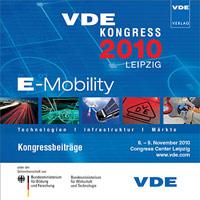Requirements on electrical power infrastructure by Electric Vehicles
Conference: VDE-Kongress 2010 - E-Mobility: Technologien - Infrastruktur - Märkte
11/08/2010 - 11/09/2010 at Leipzig, Deutschland
Proceedings: VDE-Kongress 2010
Pages: 6Language: englishTyp: PDF
Personal VDE Members are entitled to a 10% discount on this title
Authors:
Schwaegerl, Christine; Hable, Matthias; Tao, Liang; Holthusen, Sven; Ettinger, v (Siemens AG, Erlangen, Germany)
Köberle, Robert (Allgäuer Überlandwerk GmbH, Kempten, Germany)
Meyer, Ernst-Peter (Hochschule Kempten, Germany)
Abstract:
With an increasing number of electric vehicles in operation new requirements on the electrical power networks will occur. Currently these networks are designed to supply in average a typical household load of around 2 kW. If electric vehicles will be connected then this household load might depending on simultaneity of charging process and charging power increase to more than 10 kW causing overloading of elements such as lines. On the other hand the storage capacity of the car battery allows providing new services to the networks, like balancing power for increasing shares of stochastically variable generation by renewable energy sources. This paper presents the results of an investigation within the medium and low voltage networks operated by Allgäuer Überlandwerk GmbH in the southern part of Germany. The considered network is characterised by a high portion of distributed generation, especially stochastically variable photovoltaic power plants. The region is characterized by a high portion of commuters to a near city. The investigation shows how many electric cars can be integrated in an existing network depending on different locations and charging strategies. It also demonstrates the interaction between electric vehicles and stochastically varying generation. Basic guidelines for control strategies are derived. Yearly measured profiles of the loads as well as the generation from wind and solar power plants form the basis for the calculations. Stochastic load flow calculations allow statements regarding the probability of critical scenarios within the network. Based on the results solution strategies are derived and verified.


